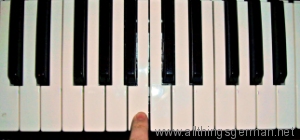 A court case in Germany made the international headlines last week. Billed in some cases as “YouTube v GEMA” it dealt with the issue of whether Google has to pay royalties for the music that people upload to the YouTube service.
A court case in Germany made the international headlines last week. Billed in some cases as “YouTube v GEMA” it dealt with the issue of whether Google has to pay royalties for the music that people upload to the YouTube service.
Since GEMA is not that well known outside of Germany, it’s probably fair to compare them with the PRS in the UK or ASCAP in the USA. Their job is to collect royalties from anyone using the music written or composed by their members.
This is a very important point: they represent the songwriters and composers, not necessarily the artists.
Just for a moment, think about what it means if you just use a piece of music on your YouTube video, without getting permission to first. You are probably infringing on the copyright of the record label or the performer on one level, but on another you are using words and music written by someone as well. [Read more…]

